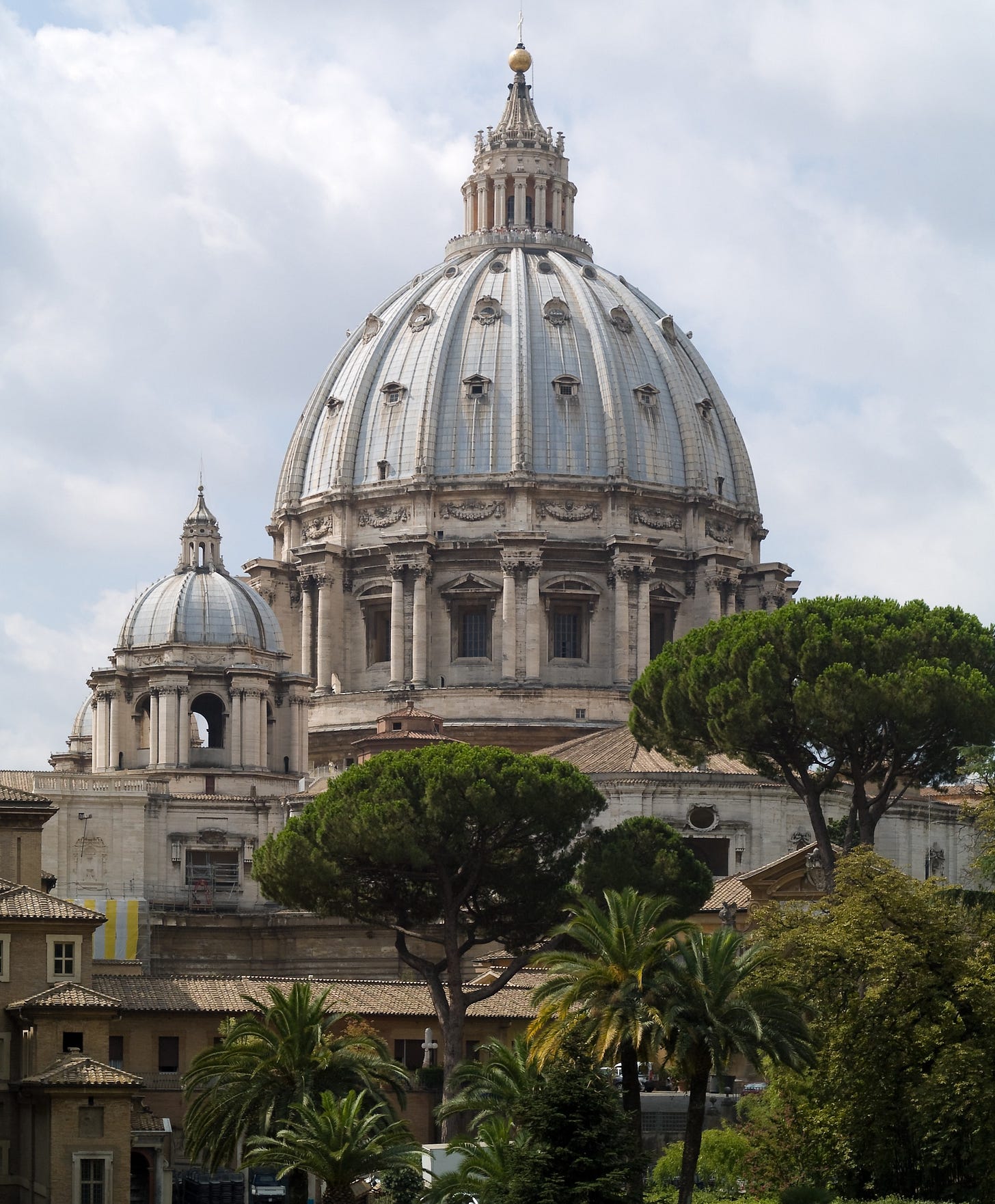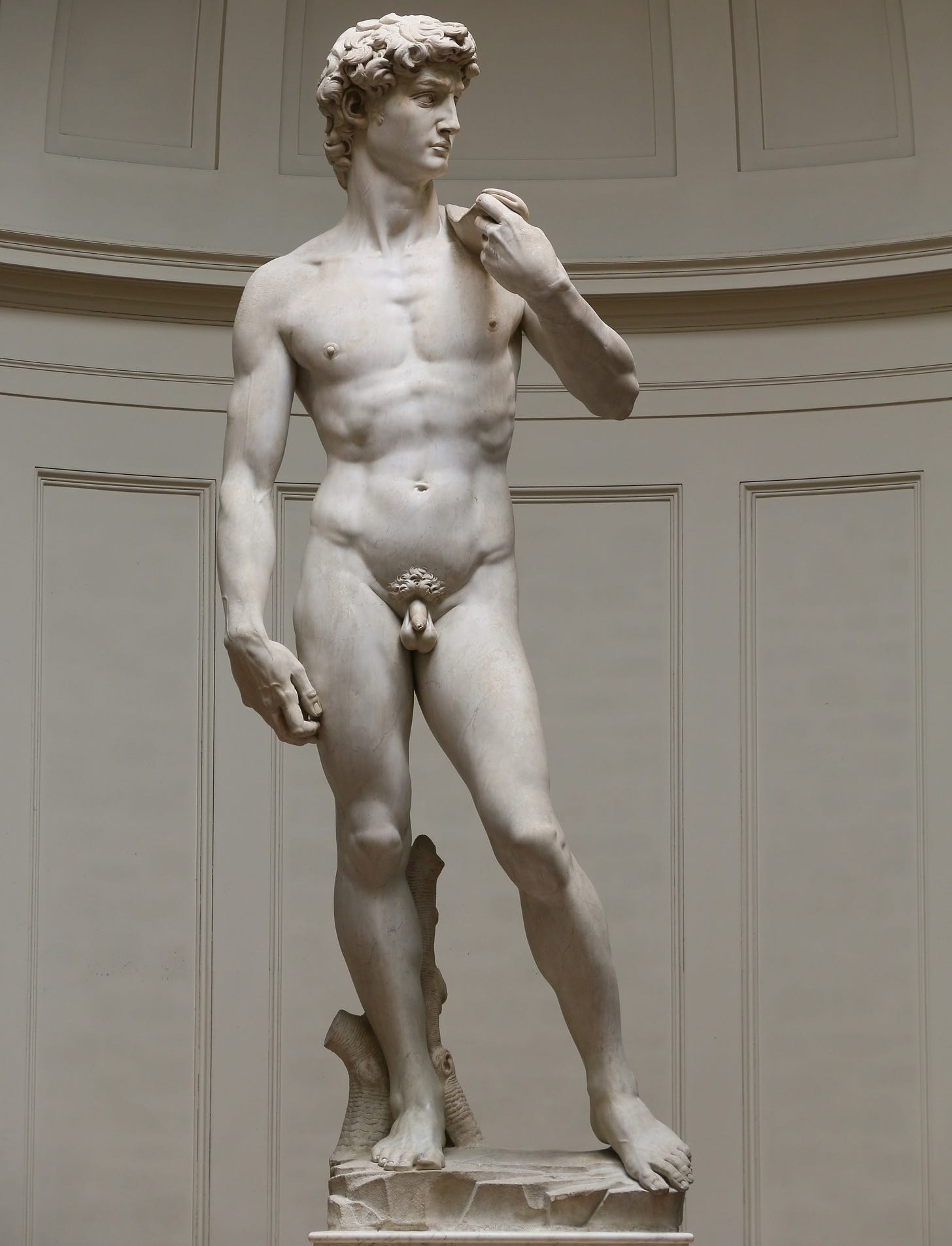LXXVI. Lessons from Michelangelo, the Greatest Renaissance Artist
Today, we'll learn from the Life of Michelangelo Buonarroti, his resilience, craftsmanship, philosophy of beauty, relationships, craftiness, and honor code as analyzed by Giorgio Vasari.
Welcome! Note that the ‘Neuroscience-based Tools’, ‘Lead to Win’ & the Le Monde Élégant social skills sections are companions for The Stoic Manual to enhance your physical and psychological health, vitality, stress resilience, discipline, focus, motivation, and refine your social skills, relationships & leadership skills for a distinguished life—by Dr. Antonius Veritas
“There can be no doubt that Michelangelo was sent into the world by God as an exemplar for thoses who practice the arts, so that they might learn from his behavior how to live and from his works how to perform as a true and excellent craftsman.” — Giorgio Vasari
“We can remove most sins if we have a witness standing by as we are about to go wrong. The soul should have someone it can respect, by whose example it can make its inner sanctum more inviolable. Happy is the person who can improve others, not only when present, but even when in their thoughts!” — Seneca
“The character you seem to have been born with is not necessarily who you are; beyond the characteristics you have inherited, your parents, your friends, and your peers have helped to shape your personality. The Promethean task of the powerful is to take control of the process, to stop allowing others that ability to limit and mold them. Remake yourself into a character of power. Working on yourself like clay should be one of your greatest and most pleasurable life tasks. It makes you in essence an artist — an artist creating yourself.” — Robert Greene
Some days, I can’t even open my laptop.
Not because I’m lazy. But because I care too much. I wonder if what I’m writing is good enough, if it carries the weight, the rhythm, the spark that my readers deserve. I ask myself if it’s interesting, if it’s alive, if it will move someone or just add to the noise. That question, is this good enough?, follows me like a ghost. I see a brilliant essay by another writer and spiral into doubt. I study the ease, the elegance, and I wonder if I’ll ever reach that level.
It happens in surgery too. I’ll watch a senior consultant move through their procedures with effortless command—swagger, finesse, mastery. And I wonder: Will I ever be like that? Or am I doomed to die an ordinary man—unfulfilled, unremarkable, unfinished?
But then I remember: even the greats once struggled. Leonardo Da Vinci burned with doubt. Montaigne battled mediocrity. They weren’t born legends, they became them. Slowly. Deliberately. By learning from those who came before, and by chiseling away, one rough day at a time.
Niccolò Machiavelli said,
“A prudent man should always follow in the path trodden by great men and imitate those who are most excellent, so that if he does not attain to their greatness, at any rate he will get some tinge of it.
He should do as those prudent archers do who, aware of the strength of their bow when the target at which they are aiming seems too distant, set their sights much higher than the designated target, not in order to reach such a height with their arrow, but instead to be able, by aiming so high, to strike their target."
This passage from Machiavelli was the reason I programmed my mind to make everyone my teacher. I always aim to learn from my friends and enemies, the living and the dead, men and women. I analyze and integrate what works to make them good at what they do, how they handle doubts and demons, how they conduct themselves to be great & admirable and what ruins them so I can avoid it. Because greatness leaves behind its fingerprints, and if you’re paying attention, you can follow the trail. Shoot for the stars, aim for the moon—the saying goes.
That's the theme of today's entry. We'll learn from the Life of Michelangelo Buonarroti, his resilience, craftsmanship, business practices, philosophy of beauty, relationships, craftiness, and honor code as analyzed by the acclaimed writer, painter and art critic, Giorgio Vasari in his book The Lives of The Most Excellent Painters, Sculptors, and Architects.
Click on the hypertext to read the others. 1. Lord Chesterfield & Marcus Aurelius on How to Be A Distinguished Man, 2. Machiavelli’s Warning Against Niceness, 3. Nietzsche’s Consolations for Difficulties, 4. Plutarch on What Made & Ruined Alexander the Great.
Michelangelo as a Divine Exemplar for Life and Art

“The great masters, including contemporary ones, all manage to retain the craftsman spirit. What motivates them is not money, fame, or a high position, but making the perfect work of art, designing the best building, discovering some new scientific law, mastering their craft. This helps them to not get too caught up in the ups and downs of their career. It is the work that matters. And in the end, these masters end up making more money and become more famous by cultivating this spirit. Steve Jobs personified this craftsman ethic. He inherited it from his father, a man who loved to build things with his hands, and the love of perfection, for making something just right, is an attitude he transferred to the design of products for Apple. That’s the master’s goal: to make things well and to feel pride in it.” — Robert Greene
In the Renaissance empyrean, Michelangelo Buonarroti shines like a star of almost supernatural brilliance. His first biographer, Giorgio Vasari, saw something heavenly in Michelangelo’s very birth and being. Writing of the infant born on a Sunday evening in 1475, Vasari says the father “was inspired by One from above and wished to make him into something celestial and divine, beyond the usual human scope.” In Vasari’s eyes, Michelangelo was no ordinary man but a divine exemplar sent to elevate art itself. Indeed, Vasari believed that absolute perfection was embodied in “the art of the divine Michelangelo,” as if God had set down this one artist to teach the world how to transform life into art. From the marble quarries of Tuscany to the frescoed vault of the Sistine Chapel, Michelangelo’s works and days seemed touched by otherworldly grace. And yet, what makes his story so compelling is not only the divinity Vasari ascribes to him, but the deeply human lessons we can learn from Michelangelo’s life.
Reading Vasari’s Lives of the Artists, we encounter Michelangelo as a living paradox: both divine and human, gifted by heaven but also marked by tireless effort and mortal struggles. He was revered in his time as “Michelagnolo Il Divino,” the divine Michelangelo, because his creations surpassed what anyone thought possible. When Michelangelo carved the Pietà, the statue of Mary cradling Christ, Vasari marveled that it was “divinely made”, “a miracle that a stone without any form at all has been reduced to a perfection which nature could form with difficulty in the flesh.” In other words, Michelangelo had wrested from cold marble an image of life so true and pure that it rivaled God’s own creation. Time and again, Michelangelo treated life and art as reflections of one another. Painting the Sistine Chapel’s ceiling, he dared to depict the very act of divine creation. In the figure of Adam receiving the spark of life, Vasari observed an uncanny artistry: Adam’s form “seems to have been fashioned by the first and supreme Creator rather than by the drawing and brush of a mortal man.” To Vasari and his contemporaries, Michelangelo’s art was not only beautiful—it was instructive, a guide on how dedication and genius can elevate the human experience to the level of the sublime.
For us today, looking up at the Sistine’s painted heavens or David’s chiseled frame, we’re invited to see our own lives as canvases and blocks of raw stone awaiting our creative touch. Michelangelo’s example, illuminated through Vasari’s loving narrative, challenges us to approach life itself as a work of art—molding our character, our relationships, our labor and even our ventures with the same devotion and daring with which he approached marble and paint.
Join 39,000 other readers or upgrade your subscription to support our work. Click here,
I. Work Ethic

“Concentrate every minute like a Roman—like a man—on doing what’s in front of you with precise and genuine seriousness, tenderly, willingly, with justice. And on freeing yourself from all other distractions. Yes, you can—if you do everything as if it were the last thing you were doing in your life, and stop being aimless, stop letting your emotions override what your mind tells you.” — Marcus Aurelius
Every masterpiece begins with raw stone, and Michelangelo’s character was no exception—he had to sculpt himself through…



